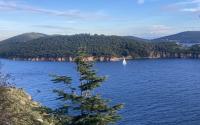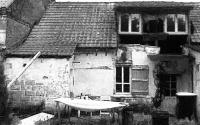By Kim Sengupta in Basra, Colin Brown and Terri Judd
01 February 2005
The security of military flights in Iraq was under urgent review last night after Islamic militants claimed they had shot down a British transport plane carrying special forces with a ground-to-air missile.
It looked increasingly likely that the 10 servicemen on board the Hercules C-130 were killed by insurgents, butdetails of the crash were shrouded in mystery as ministers faced questions about the plane's mission. The escalation in the insurgents' threat, if confirmed by crash investigators at the site, will cause alarm. The Hercules aircraft are the workhorses of British and US forces. They are regularly used to ferry special forces and their equipment, and even VIPs on visits to Baghdad and Basra, where British troops are based. Allied troops had feared that a missile attack would bring down one of the slow transport planes and there was concern that counter-measures fitted to them appeared to have failed.
Questions were also being asked as to why 10 British servicemen were being flown to a US base in northern Iraq. The nine members of the RAF on board belonged to a squadron that works with the Special Air Service and Special Boat Service. The other soldier who was killed is believed to have been a member of the SAS.
They were heading for a huge US base in Balad, which is used as an outpost for the SAS. Labour MPs speculated that the men who were killed were engaged in operations along the Iranian border.
Wreckage was strewn across the crash site 20 miles north of Baghdad, suggesting a mid-air explosion had occurred. British ground troops searching for the bodies yesterday were trying to secure the area, which is in hostile territory.
Footage on al-Jazeera television appeared to support the insurgents' claims. It showed a remote-controlled mechanism apparently firing two missiles at a plane, although the authenticity of the film could not be verified. There was also footage of parts of a burning plane spread over a wide area, including a large section of an engine. The flat, featureless wilderness gives no clues as to where the video was shot. One short sequence, appearing to show the fireball as the wreckage landed, is filmed from a distance through palm trees.
The video was issued by the "1920 Revolution Brigade". Another Islamist group, Ansar al-Sunna, had earlier claimed responsibility for bringing down the plane. British officers in Iraq said little could be deduced from the footage.
Insurgents had threatened a "spectacular" attack and senior MPs said the timing, coinciding with the elections, suggested strongly that the aircraft was brought down by a missile. One senior Liberal Democrat figure said: "The US flooded Afghanistan with Stinger missiles and there are plenty of them around. It is highly likely that the plane was brought down by one of their missiles."
The attack is likely to increase pressure on the allied forces. Most roads in the country, especially in the Sunni area of central Iraq, are highly vulnerable to insurgent attacks, and convoys are regularly ambushed. This has forced US and British forces to rely on aircraft for moving troops and supplies.
Senior military sources in Iraq described the gravity of the situation. One officer said: "If we lose freedom of air movement it will be a massive problem. The investigation will conclude what exactly happened, but at the moment it looks more and more like enemy action. The C-130 has anti-missile defences, so this is quite puzzling. We are taking the precaution of carrying out a security review because this is Iraq and you cannot take chances."
A senior MoD official said: "It was a routine operational flight from Baghdad international airport to Balad. They were transporting people. We don't comment on special forces operations normally but this was a routine operational sortie."
Peter Felstead, editor of Jane's Defence Weekly, said: "If the al-Jazeera footage is genuine, it shows that an aircraft flying at altitude has been shot down by what looks like some sort of spliced-together weapons system. This would be an unprecedented and catastrophic event. Hitherto we have not seen the insurgents capable of launching such an attack."
One of the victims was identified as Paul Pardoel, a 35-year-old navigator. Flt Lt Pardoel, who was born in Melbourne, Australia, had been living with his family near the base at RAF Lyneham. He had been with the RAF's 47 Squadron, a unit known for working with special forces. His father, John, 78, said: "He was the nearest thing you find to an ideal child."
The Government rejected demands for British troops to be withdrawn from Iraq when their mandate from the United Nations expires at the end of this year. Jack Straw, the Foreign Secretary, said it would be "utterly irresponsible" to set such a deadline.
Although he predicted that Sunday's elections would reduce terrorism in Iraq, he expected the security situation to remain difficult for "quite a period". He told the Commons that the Iraqi government "may well" request that the UN mandate be extended.
* The 10 service personnel killed when an RAF Hercules crashed in central Iraq were today named by the Ministry of Defence as Squadron Leader Patrick Marshall, Flight Lieutenant David Stead, Flight Lieutenant Andrew Smith, Flight Lieutenant Paul Pardoel, Master Engineer Gary Nicholson, Chief Technician Richard Brown, Flight Sergeant Mark Gibson, Sergeant Robert O'Connor, Corporal David Williams and Acting Lance Corporal Steven Jones.






